Weekly birding round-up: 14 - 20 Mar
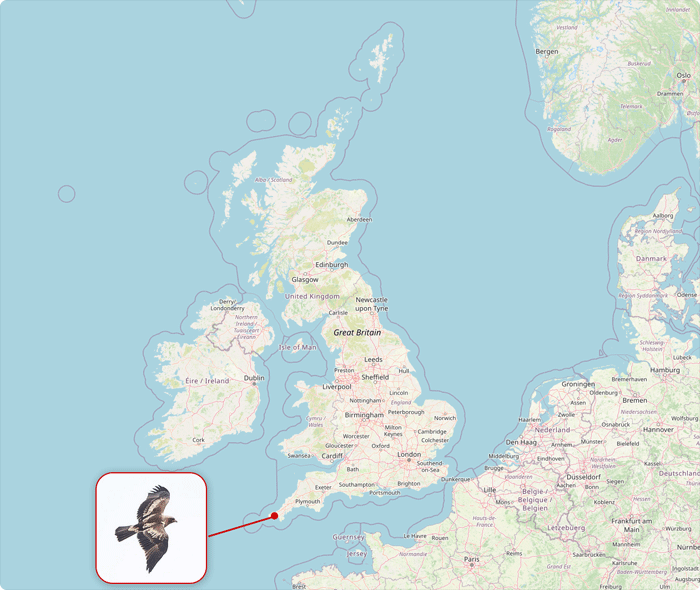
We continued to drift in the lull before the storm in recent days, with full blown spring still tantalisingly just out of reach. The week just gone wasn’t rocking the boat in any way, shape or form. But it was a busy one for ducks again, so there was that.
There’s still an irresistible feeling that the pale morph Booted Eagle show in Cornwall is drawing to a close but, for this week at least, there it still was in the county, seen at Marazion Marsh RSPB again on 16th and, later that day, at Chapel Carn Brea.
No further news in the days that followed though, at least not until 20th, when an unconfirmed report came of a bird seen up country in Devon from a moving vehicle at the M5 / A30 interchange.
Certainly a sign of the changing of the seasons, numbers of White-billed Diver seen in the usual Scottish hotspots began, modestly, to mount this past week. One seen from Portsoy (Aberdeenshire) on 15th-16th was followed by two birds present off there on 18th; while three were seen in Orkney’s Westray Firth on 17th. A single bird was seen off Lunna (Shetland) on 17th also; while an immature was lingering off the Lothian coastline on 15th-17th in the Gullane area.
Two Pomarine Skua were seen off Lyme Regis (Dorset) on 16th; and a further singleton off Strumble Head (Pembrokeshire) on 20th.
In Ireland the adult Double-crested Cormorant was again seen at Colgagh Lough (Co.Sligo) on 19th.
Numbers of Glossy Ibis remained largely unchanged, with a shade over 15 birds once again noted across Britain and Ireland. This wasn’t to say there weren’t new birds in the mix – a particularly ambitious individual pitched down onto Orkney on Shapinsay on 15th-16th. Elsewhere duos remained at Ham Wall RSPB (Somerset) still on 14th-20th; at Langford Lowfields RSPB (Northamptonshire) still on 14th-18th; at Deeping Lakes LWT (Lincolnshire) still on 15th; at Etton-Maxey Pits (Cambridgeshire) on 19th-20th; and in Co.Wexford at Lady’s Island Lake on 15th-19th still.

Ireland this week was largely the place to be for The Goose Formerly Known As Canada, with examples of hutchinsii Richardson’s Cackling Goose seen on 16th in Co.Mayo at Annagh Marsh and Cross Lough again, and in Co.Sligo at Lissadell again; and on 19th at Ballintemple (Sligo) again. Another was seen in Scotland on 14th once more at Crook of Baldoon RSPB (Dumfries & Galloway).
Scotland continued to supply sightings of Ross’s Goose too, albeit the recent Shetland bird went unreported this past week until 20th, when it was confirmed to still be in the north of Mainland at Toft. On the Scottish mainland, one was again seen at Musadale (Argyll & Bute) on 17th, while intermittent reports continued to come of the individual at Galston (Ayrshire).
Scotland accounted for sightings of Snow Goose on North Ronaldsay (Orkney) on 18th, and at Cameron Reservoir (Fife) on 18th also. In East Yorkshire two remained at Beverley on 14th-15th; while one was again seen in Gwynedd at Dinas Dinlle on 14th-19th. An Irish individual was seen in Co.Donegal at Tory Island on 19th-20th.
On Islay (Argyll & Bute) the Red-breasted Goose was still to be seen on 15th.
Our only Black Brant this week was a bird again at Kilnsea Wetlands NR (East Yorkshire) on 18th. A possible Grey-bellied Brant remained on Dalkey Island (Co.Dublin) on 18th.
Moving onto the quackers, the resident drake Black Duck remained at Cross Lough (Co.Mayo) on 16th-19th.
Lending some variety to proceedings, a female Blue-winged Teal was found at Tacumshin (Co.Wexford) on 17th; and two were found on 20th in East Yorkshire at Brough Airfield Marsh.
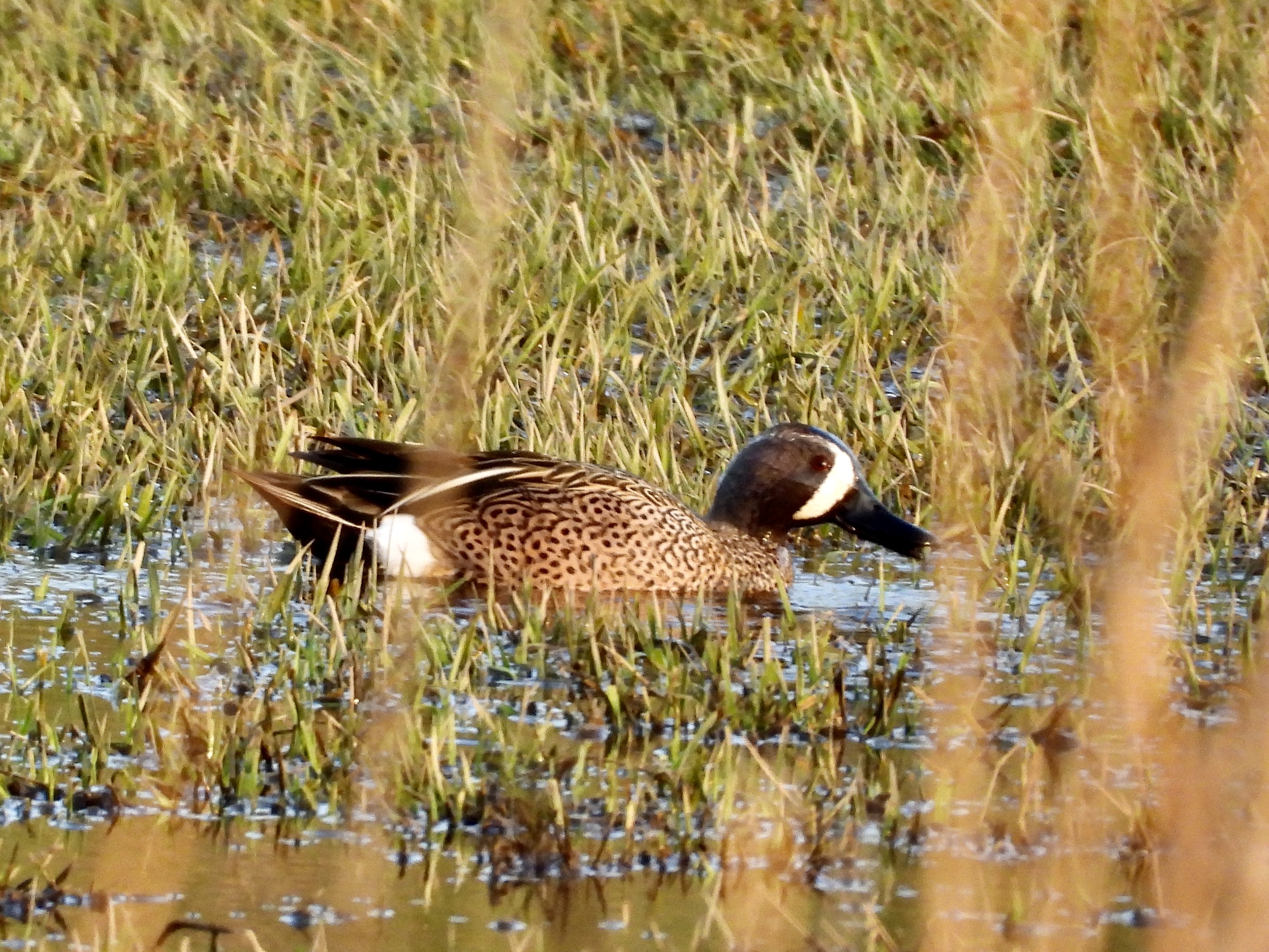
Numbers of Green-winged Teal held firm for still another week, with a shade over 15 birds noted across Britain and Ireland as a whole. American Wigeon also stayed constant, with six birds noted – one still in Shetland at Loch of Hillwell on 15th-17th; the Darnconner Quarry (Ayrshire) bird still there on 14th, and nearby at Bruntwood Flash on 20th; the East Cottingwith (East Yorkshire) bird lingering on 14th-18th; the long-staying Kenfig (Glamorgan) individual still there on 15th-19th; one in Ireland at Milltown Bridge (Co.Kerry) on 15th-17th; and, on 19th-20th, one present on South Uist (Western Isles).
Two Ferruginous Duck remained this week at Napton Reservoir (Warwickshire) on 14th-18th, while another was again to be seen at West End GPs (Lincolnshire) on 16th-20th.
If the week belonged to any duck, it was once again the irrepressible Ring-necked Duck, with getting on for 45 birds noted over the course of recent days. These included several small aggregations of their kind – numbers in Cornwall at Dozmary Pool rose to four birds there on 16th, while four were again noted on Lough Gara (Co.Sligo) on 19th; trios were seen at Loch Scarmlate (Highland & Caithness) on 15th, and on Lough Ennell (Co.Westmeath) on 16th; and two birds were present at Gouthwaite Reservoir (North Yorkshire) still on 15th-20th, and on Castlehume Lough (Co.Fermanagh) on 16th. Surely one to keep an ever keener eye out for on your local freshwater body in the next week or two.
Lesser Scaup continued to put on a good show too, with a dozen birds logged during the week. Foremost amongst those were three on Loch Leven (Perth & Kinross) on 16th still, and two still present on Abberton Reservoir (Essex) on 14th-18th. Singletons remained at Longham Lakes (Dorset) on 14th-20th; at Lochwinnoch RSPB (Clyde) on 14th-16th; at Whelford (Gloucestershire) on 18th-20th; and in Ireland at Tacumshin (Co.Wexford) on 15th-20th, at Bateman’s Lake (Co.Cork) on 14th still, at Lough Corrib (Co.Galway) on 17th, and on Lough Gara (Co.Sligo) and Cross Lough (Co.Mayo) on 19th.
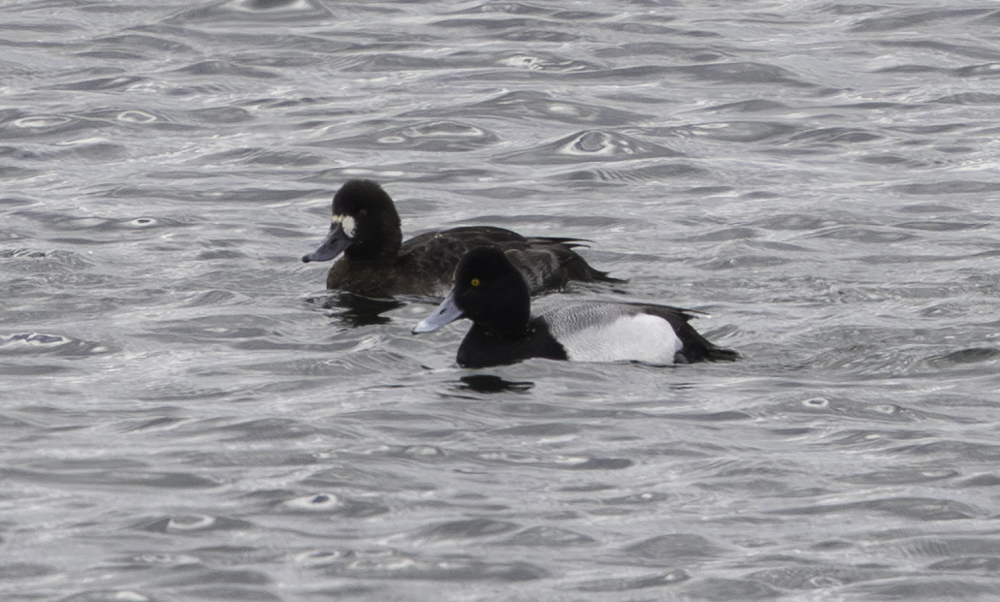
The drake Black Scoter was still present off Hoylake (Cheshire & Wirral) on 15th-20th.

In Scotland, at least one drake White-winged Scoter was lingering off Gullane Point (Lothian) until 20th, with two seen there on 16th again; while one was seen in Fife off East Wemyss on 15th also, and at Leven on 20th.
East Wemyss also supplied two Surf Scoter on 15th; two were also seen this week in Fife at Buckhaven on 16th. One remained off South Uist (Western Isles) on 15th; the Three Beaches Headland individual was still in Devon on 19th-20th; and a probable was seen passing Holy Island (Northumberland) on 14th.
Finally, in Shetland the drake Bufflehead remained at Loch of Hillwell in the south Mainland on 15th-16th and again on 19th-20th. After no news for almost a week, confirmation also came on 19th that the American Coot was still just up the road at Loch of Spiggie.
Thank goodness for Long-billed Dowitcher, or we’d be utterly bereft of notable waders this past week. In Devon, one remained at Bowling Green Marsh RSPB on 14th-20th; while the Tacumshin (Co.Wexford) individual was again seen there on 15th-19th.
A trio of Bonaparte’s Gull open our gull account this past week – one was again seen in Cornwall at Marazion on 18th, and Lelant Saltings on 19th-20th; the first-winter bird remained in Glamorgan on the Ogmore Estuary on 14th-20th; while in Ireland the adult remained at Ballyconneely (Co.Galway) on 14th.
The week proved to be a busy one once again for Ring-billed Gull, particularly in Ireland. Sightings in Co.Kerry came thick and fast on 17th – one at Barrow Harbour; one at Tralee Bay Wetlands; and two again at Blennerville. Co.Cork proved no slouch either – two were again in Cork on 16th; and a first-winter at Ballydehob on 14th. Single birds meanwhile were seen at Enniskillen (Co.Fermanagh) on 15th still, and again at Nimmo’s Pier (Co.Galway) on 16th. Britain had to make do with just the one adult, again at Hayle Estuary RSPB (Cornwall) on 15th-20th.
Numbers of white-wingers began to contract somewhat, with 10 Glaucous Gull noted, and just shy of 20 Iceland Gull noted across Britain and Ireland.
Kumlien’s Gull meanwhile continued to attract attention, not least the individual that just may yet prove to be a Thayer’s after all still present on Unst (Shetland) on 16th-18th. Additional Kumlien’s remained at Aber Ogwen (Gwynedd) on 14th-20th; Helmsdale (Highland & Caithness) on 14th and 19th; and at Milltown Bridge (Co.Kerry) again on 15th-17th; while another was seen in Cornwall at Polgigga on 14th-15th.
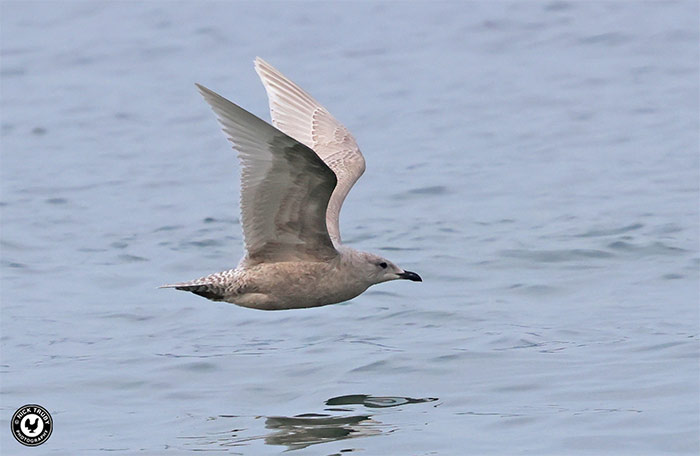
The weekly raptor roll-call was given a little variety by a Black Kite seen in Cornwall at St Erth on 16th.
Besides that, it fell once more to Pallid Harrier to make the news - just the two birds were reported this past week, these being the female still in Norfolk around Warham Greens on 14th-20th, and the second-winter male again in Pembrokeshire at Castlemartin Corse on 15th.
Scilly once again opens the section this week, though that looks to be set to change as the mobile recent Pied Crow was last seen there on St Agnes on 15th, and appears now to have done a bunk, perhaps towards France. (Imagine that, a highly mobile species perfectly capable of substantial open-water crossings. It’s almost like birds could, conceivably, make it into northern Europe under their own steam and not on the deck of a boat…). Meanwhile, the recent Irish bird remained at Barna (Co.Galway) on 14th.
In Cornwall the green shoots of spring began to be seen this past week. The recent Hoopoe remained at Sennen on 17th-20th, while sightings of Alpine Swift came this week from Cot Valley on 16th, and Trevescan on 18th.
Further Hoopoe records this week came from Rossington (South Yorkshire) again on 16th, and near Tenby at Penally (Pembrokeshire) on 17th-19th. Then, on 20th, spring finally happened – a small arrival of birds marked the emphatic spring equinox: birds were found on Scilly on St Mary’s and St Martin’s; in one in Cornwall at The Lizard; and a Devon bird at Churchstow.
Our three wintering Great Grey Shrike were all logged again in recent days – these being the birds at Cannock Chase (Staffordshire) still on 14th-19th; at Hatfield Moors NNR (South Yorkshire) still on 15th-18th; and at Copt Hall Marshes (Essex) again on 18th. A further bird was found on 20th in Devon near Bellever Tor.
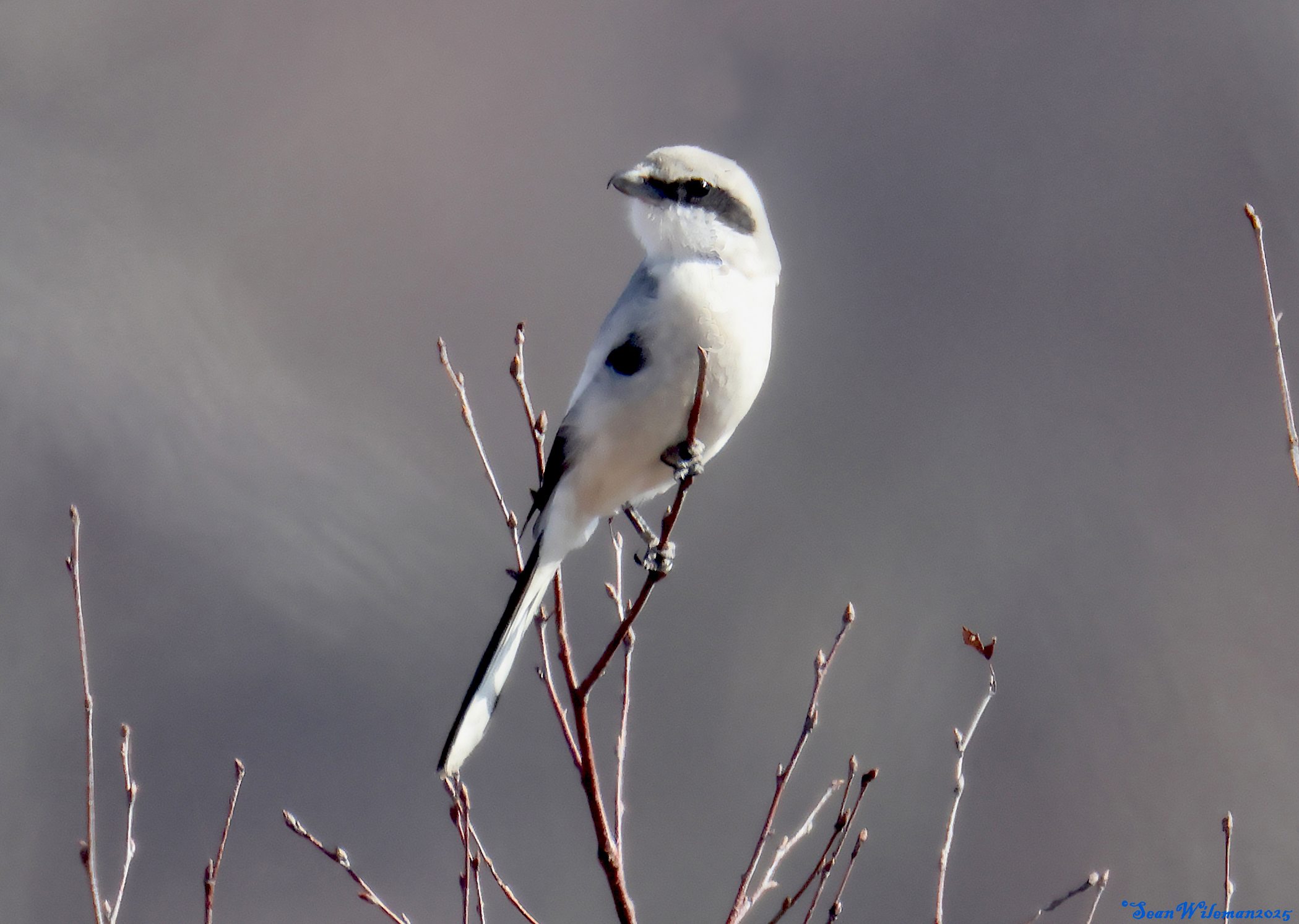
The biggest flock of Waxwing so far this year – indeed, almost the sum total of all Waxwing this year – were seen on 19th at Chapel Allerton (West Yorkshire), where 20 birds were to be found.
The recent Yellow-browed Warbler continued to lurk around the sewage works at Wells (Somerset) on 15th.
In Buckinghamshire, the Richard’s Pipit remained outside Newport Pagnell on 14th-20th, while the Awre (Gloucestershire) bird was also present on 14th-20th still.
While we’re not going to endlessly report races of Yellow Wagtail in these parts, the first birds of spring this week were notable – three Blue-headed Wagtail pitched down onto St Martin’s (Scilly) on 20th; while another was reported from South Huish Marsh (Devon), also on 20th.
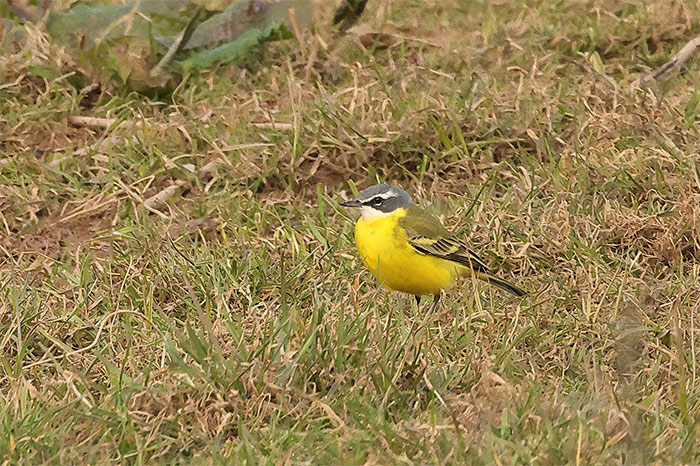
Finally, the wintering Little Bunting was once more seen at Send (Surrey) on 15th-20th.
As ever lately, the overseas news starts anew in the Netherlands, where the drake Spectacled Eider remained off Texel throughout the week until 19th. Is this bird going to feel an urge to head north sometime in the coming weeks?
Spectacled Eider off IJzeren Zeekaap #Texel yesterday afternoon - well worth the trip #Brileider pic.twitter.com/uJNUQvvI66
— bigpatfinch (@bigpatfinch) March 15, 2025
Speaking of the north, in Iceland the White-winged Scoter remained off Reykjavik on 14th.
In Germany the Western Orphean Warbler was still present in Eching on 14th-19th, while the Sandhill Crane was still at Gross Heseper Moor on 17th. Germany also scored a Sociable Lapwing at Einbeck on 17th.
Nor was this the only sighting of Sociable Lapwing in northern Europe this past week – sightings also came from Valpuiseaux in France on 17th, and Lac de Virelles in Belgium on 18th.
In Portugal, the Yellow-crowned Night Heron remained at Quinta do Lago on 18th.
Finally, a Lesser Moorhen was seen in Morocco at Asif Tifnout on 15th-20th.
Spring, as we saw on the final day of the week just gone, is drawing inexorably upon us. And thank goodness for that after a winter that, while far from without its birding highlights, has dragged on a little in the past fortnight.
All that said, as the coming week draws on it’s looking like northerlies will be slamming the door for at least a day or two. But going into the weekend, there’s some south-easterlies off the near continent to play with.
We’ll take a punt on a longshot, with recent events in France, Belgium, and Germany in mind. Could we get a Sociable Lapwing to call our own?

Jon Dunn
21 Mar 2025
Many thanks to all this week's contributors for your photos and videos
Share





